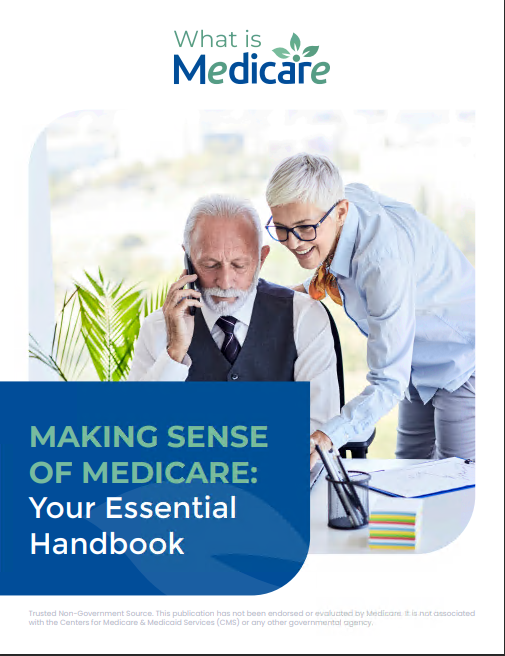Key Takeaways:
-
Open Enrollment runs from October 15 to December 7, giving you a limited window to review and adjust your Medicare coverage.
-
Comparing costs, benefits, and provider networks ensures you don’t end up paying for coverage that doesn’t meet your healthcare needs.
Step 1: Mark Your Calendar and Prepare Early
The Medicare Open Enrollment Period (OEP) happens every year from October 15 to December 7. Missing this window means you might have to wait an entire year to make changes. Instead of scrambling at the last minute, prepare early by setting reminders.
By September, Medicare should send you an Annual Notice of Change (ANOC) if you are already enrolled in a plan. This document details any modifications to costs, coverage, and provider networks. Reviewing it as soon as you receive it allows you to assess whether your current plan still meets your needs or if you should explore other options.
Step 2: Review Changes in Costs and Coverage for the Upcoming Year
Medicare plans change every year, so assuming your current plan stays the same could lead to surprises. Deductibles, co-pays, and premiums may increase, and certain medications or doctors might no longer be covered. Here’s what you should check:
Medicare Part A and Part B Changes
-
Medicare Part A (Hospital Insurance): Check inpatient hospital costs, including your deductible and daily co-insurance rates. The 2025 inpatient hospital deductible is $1,676 per benefit period.
-
Medicare Part B (Medical Insurance): The standard monthly premium for 2025 is $185, and the deductible is $257. Verify whether your doctors are still covered under Medicare.
Medicare Part D and Prescription Drug Coverage
-
The out-of-pocket cap for prescription drugs in 2025 is $2,000. After reaching this limit, your plan covers 100% of your covered medication costs.
-
Review any changes to the formulary (drug list) to see if your medications are still included.
Step 3: Compare Plans to Find the Best Fit
Even if your current plan seems to work, comparing available options can help ensure you’re not overpaying or missing out on better benefits. Medicare provides several choices, including:
Traditional Medicare vs. Other Plans
-
Original Medicare (Parts A & B): Covers hospital and medical services but does not include prescription drug coverage.
-
Medicare Supplement (Medigap): Helps cover out-of-pocket costs like co-pays and deductibles.
-
Medicare Part D: A standalone prescription drug plan to pair with Original Medicare.
What to Consider When Comparing Plans
-
Monthly Premiums and Out-of-Pocket Costs – While Original Medicare has standard costs, other plans have varying expenses.
-
Doctor and Hospital Network – Ensure your preferred doctors and hospitals are included in the plan’s network.
-
Additional Benefits – Some plans offer extras like vision, dental, or hearing benefits. However, availability and costs can change annually.
Step 4: Watch Out for Enrollment Mistakes
Mistakes during Open Enrollment can lead to coverage gaps or unexpected costs. Avoid these common errors:
Missing the Deadline
The Open Enrollment Period ends on December 7. If you don’t make changes by then, you’re locked into your current plan for another year unless you qualify for a Special Enrollment Period (SEP) due to a major life event.
Assuming Your Plan Is the Same
Medicare plans change yearly, and so should your approach. Even if your monthly premium stays the same, other costs—like deductibles or co-pays—may increase. Also, provider networks may change, potentially affecting access to your preferred doctors or hospitals.
Ignoring Medicare Part D Changes
Each year, plans revise their covered medication list. If your current plan no longer covers an essential drug or if a lower-cost alternative exists, switching plans could save you money.
Step 5: Get Help from a Licensed Agent
Navigating Medicare alone can feel overwhelming, especially with so many changes. Working with a licensed agent can help simplify your decision-making process.
Why Consulting an Agent Can Help
-
They provide personalized assistance in comparing costs, benefits, and coverage options.
-
They ensure you don’t overlook plan changes that could impact your care.
-
They help you understand how your choices fit into your long-term healthcare needs.
If you need guidance, get in touch with a licensed agent listed on this website to ensure you make the best choice during Medicare Open Enrollment.
Making Smart Decisions Before the Enrollment Window Closes
Medicare Open Enrollment is your annual opportunity to reassess and optimize your healthcare coverage. By preparing early, reviewing cost changes, comparing plans, avoiding enrollment mistakes, and seeking expert guidance, you can confidently select the best plan for your health and financial needs in 2025.










